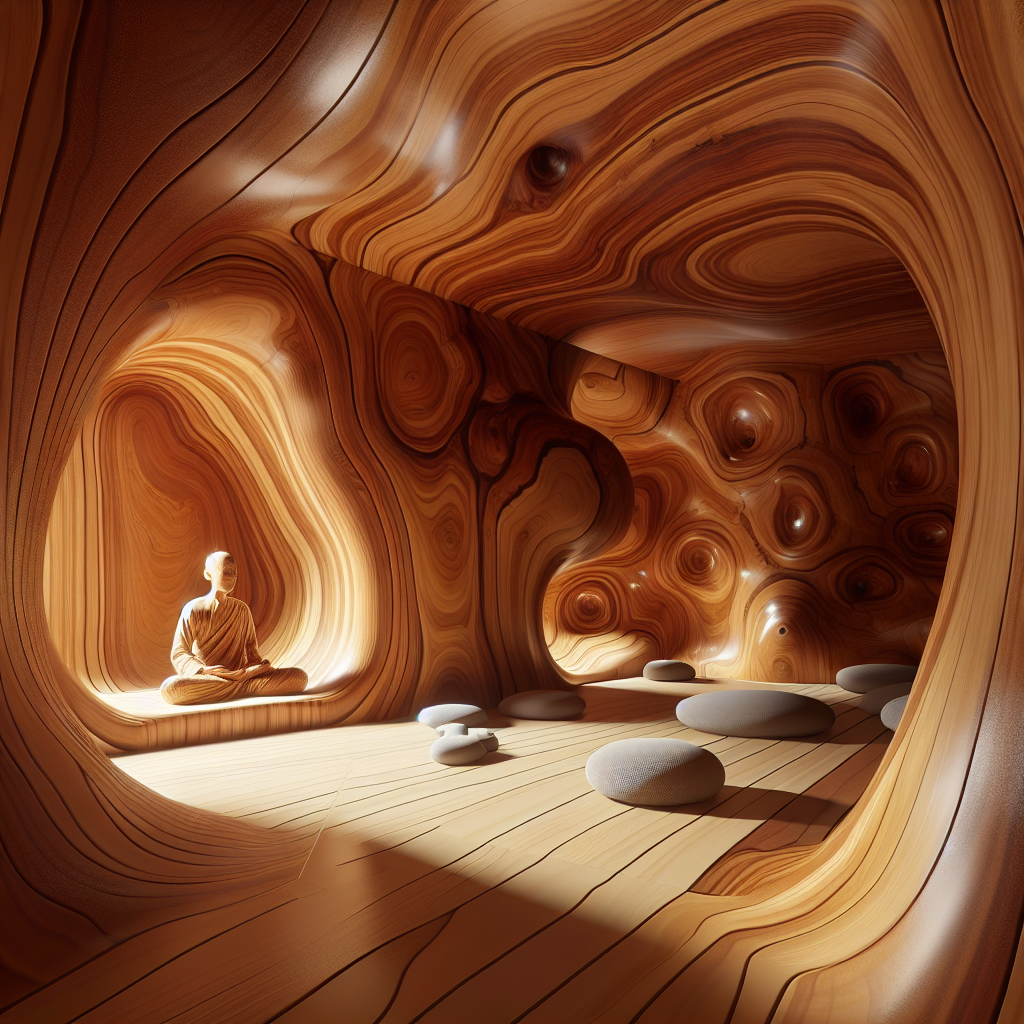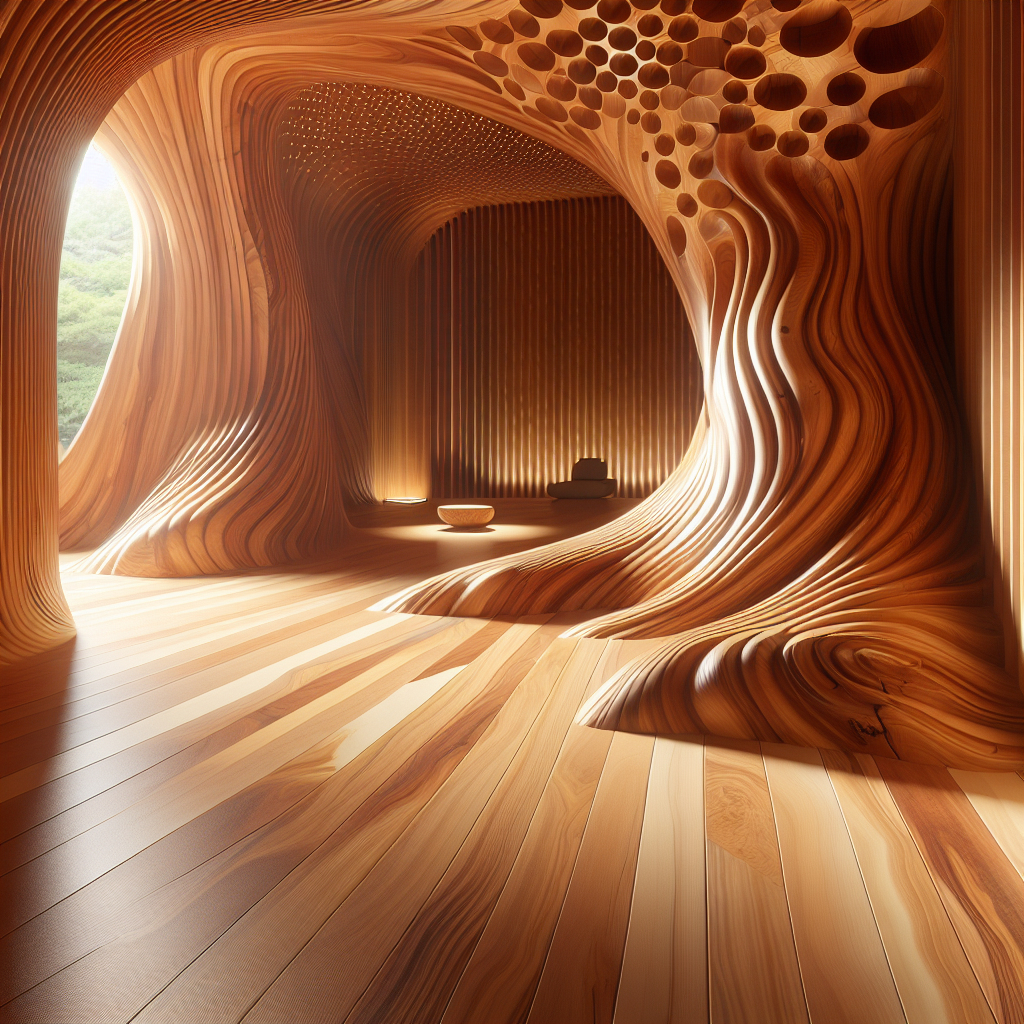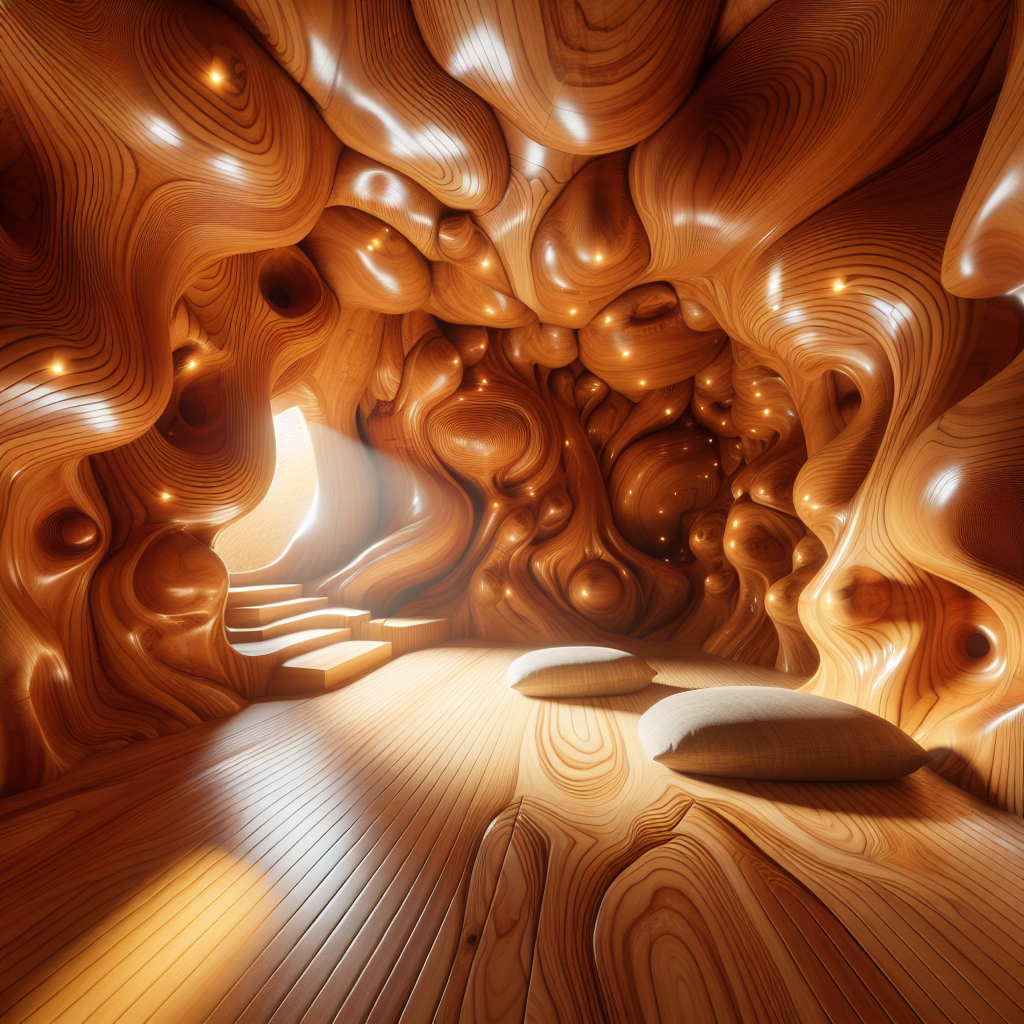Monumental wood single: massive trunk shaped into entire rooms

Monumental Wood Single: Massive Trunk Shaped into Entire Rooms
In an era dominated by digital fabrication and synthetic materials, the resurgence of natural elements in architecture and design offers a refreshing and deeply human counterpoint. At the forefront of this organic renaissance is the extraordinary concept of monumental wood singles—massive tree trunks meticulously carved into entire rooms, seamlessly blending sculpture, architecture, and nature. This innovative approach not only challenges traditional notions of interior spaces but also underscores a profound shift towards sustainability and biophilic design.
From Tree to Habitable Sculpture: The Evolution of Monumental Wood Singles
The concept of shaping a single massive trunk into an inhabitable space is not entirely new; historically, indigenous cultures across the globe have crafted dwellings from singular, monumental trees. Yet, today’s architects and designers are revisiting this ancient practice with cutting-edge technology and refined craftsmanship, creating awe-inspiring interiors that blur the lines between sculpture and architecture.
At the heart of this approach lies the philosophy of biophilic design, a movement that emphasizes our innate connection to nature and its profound impact on human health and well-being. Monumental wood singles encapsulate this ethos, offering interiors that not only celebrate natural beauty but also enhance the psychological and physiological comfort of their inhabitants.
Case Study: The Cedar Sanctuary by Hiroshi Nakamura & NAP Architects
One remarkable example of monumental wood singles is the Cedar Sanctuary, a serene meditation space designed by the acclaimed Japanese architect Hiroshi Nakamura. Carved entirely from a single, massive cedar trunk, this space exudes tranquility and reverence, embodying the essence of Japanese minimalism and craftsmanship.
Upon entering the Cedar Sanctuary, visitors are immediately enveloped by the warm, aromatic embrace of cedar wood. The interior walls, gently curved and polished to a satin finish, reveal the tree’s intricate grain patterns, knots, and imperfections, each telling a unique story of growth and resilience. Natural light filters softly through strategically placed apertures, creating a play of shadows and highlights that accentuate the organic contours of the space.
Nakamura’s meticulous attention to detail extends beyond aesthetics; the sanctuary’s acoustic properties are carefully calibrated, allowing sound to resonate gently within the wooden walls, enhancing the meditative experience. This thoughtful integration of sensory elements underscores the profound potential of monumental wood singles to create deeply immersive environments.
Technological Innovations Driving the Monumental Wood Single Movement
The resurgence of monumental wood singles is largely enabled by recent advancements in digital fabrication and precision carving technologies. Architects and designers now leverage sophisticated CNC milling machines and 3D modeling software to transform massive trunks into complex, habitable sculptures with unprecedented accuracy and efficiency.
This fusion of traditional craftsmanship and modern technology echoes broader trends in sustainable architecture, such as the rise of wooden skyscrapers and the exploration of biodegradable materials. Monumental wood singles represent a compelling intersection of these movements, demonstrating how innovation can breathe new life into age-old practices.
Sustainability and Ethical Considerations
While the aesthetic and experiential qualities of monumental wood singles are undeniably captivating, their sustainability and ethical implications merit careful consideration. Architects committed to this practice prioritize sourcing trunks from sustainably managed forests, often utilizing trees that have naturally fallen or require removal due to safety concerns or ecological management.
Furthermore, monumental wood singles inherently embody principles of circular economy and zero-waste design. By utilizing an entire trunk, designers minimize waste and maximize resource efficiency, aligning with broader industry goals towards zero-waste masterpieces and sustainable construction practices.
Global Inspirations: Monumental Wood Singles Around the World
Beyond Japan, architects worldwide are embracing monumental wood singles as a powerful medium for expression and innovation. In Norway, architect Sverre Fehn’s iconic Nordic Pavilion in Venice showcases massive timber elements, emphasizing the tactile and sensory qualities of wood. Similarly, indigenous-inspired designs in Canada and the Pacific Northwest highlight the cultural significance and timeless appeal of crafting spaces from singular, monumental trees.
These global examples illustrate the versatility and universal resonance of monumental wood singles, transcending cultural boundaries and appealing to a diverse audience of design enthusiasts and professionals alike.
The Future of Monumental Wood Singles in Contemporary Architecture
As we look ahead, the potential for monumental wood singles to shape contemporary architecture and interior design is vast. Architects and designers increasingly recognize the value of integrating natural elements into built environments, driven by growing awareness of sustainability, biophilia, and human-centric design principles.
Emerging trends suggest that monumental wood singles will continue to evolve, incorporating advanced technologies such as augmented reality for design visualization and precision fabrication. Moreover, as urbanization intensifies, the demand for spaces that reconnect inhabitants with nature will likely accelerate, positioning monumental wood singles as a compelling solution for future architectural projects.
Indeed, the integration of monumental wood singles aligns seamlessly with broader discussions around net-zero architecture and sustainable urban development, underscoring their relevance and timeliness in today’s design discourse.
Conclusion: A Return to Roots
Monumental wood singles represent more than mere architectural novelty; they embody a profound return to our roots, both literally and metaphorically. By transforming massive trunks into entire rooms, architects and designers create spaces that resonate deeply with our innate connection to nature, offering immersive, sensory-rich environments that enhance well-being and inspire awe.
As we navigate an increasingly digital and urbanized world, the allure of monumental wood singles serves as a poignant reminder of the enduring power and beauty of natural materials. Through thoughtful innovation and responsible sourcing, this movement promises to shape the future of architecture and design, inviting us to reimagine our relationship with the built environment and the natural world.
Ultimately, monumental wood singles are not merely spaces to inhabit; they are living sculptures, breathing new life into architecture and redefining the boundaries of possibility.








